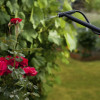Diseases of roses and their treatment
Pests
There are several dozen species of insects that feed on plants, settle on them, or lay offspring. Pests of roses can not only significantly reduce their protection against diseases, spoil the decorative effect, they can completely destroy the plant if they do not start the fight as early as possible. It is advisable to fully examine the bushes more often, noticing the appearance of pests, immediately get rid of them mechanically, for example, wash them off with a stream of water, and then develop a strategy for further struggle.
Video "Rose Pests"
From the video you will learn about insects that harm roses.
Rose aphid
Small, less than 1 mm long, green, black or brown insects occupy young shoots, leaves, rosebuds, feeding on their juice. There are winged specimens that fly to other plants, expanding their territory. Shoots under their influence are deformed, devoid of strength cease to grow.
If a small number of parasites are noticed, then they need to be collected by hand, destroyed, and then the plant should be treated with soapy water or nettle infusion. If you are not against chemicals, then you can use the systemic insecticide "Aktara" or "Etisso", which is available in a convenient spray form.
Rose leafhopper
If discolored spots appear on the leaves, then they dry up, then you need to see if there is a yellow insect about 4 mm long on the underside. These are rosaceous leafhoppers that sit along the veins of leaves, eat away their flesh, drink juice, and at the slightest movement of the leaf quickly jump down to the ground. They lay their offspring in the bark of the shoots; during the summer, two generations of pests have time to hatch. Especially a lot of them appear in dry hot weather.
The affected leaves must be removed and destroyed, because larvae may remain there, and the entire plant will have to be treated with insecticides. "Aktara" or other drugs will help to overcome this pest, you just need to process the back of the leaf. It is necessary to carry out two treatments with a break of 10 - 12 days.
Drooling penny, or omnivorous leafhopper
On the back of the leaves or in their axils, among the frothy secretions similar to saliva, the larvae of the omnivorous leafhopper, a gray-yellow insect that feeds on the sap of the plant, hide. It is worth turning the leaf over to notice how the larvae crawl out of the foam and escape.To get rid of them, you need to treat the roses with chemicals (Actellic), cut off and destroy the affected leaves. Ladybugs and lacewings eat cicadocs; it would be nice to attract them to the site.
Spider mite
This pest often affects indoor and greenhouse roses, but in dry hot weather it can also appear in a garden flower bed. An inattentive owner can only detect it by a cobweb that braids the leaves and shoots of the plant. A little earlier, small light spots indicate the appearance of a tiny white mite - first, yellowish dots appear on the leaves, then they grow, a spider web appears, braiding the branches. It appears with increased dryness of the air and lack of moisture.
To get rid of it, you need to wash the plant, spray it and the area around it with clean water. From chemicals used "Fitoverm".
Leaf rollers
Leafworms feed on leaves; these small greyish-yellow or green caterpillars live in folded leaves. If you do not notice them in time, then the entire rose bush can turn into a sluggish weak plant with twisted and gnawed leaves.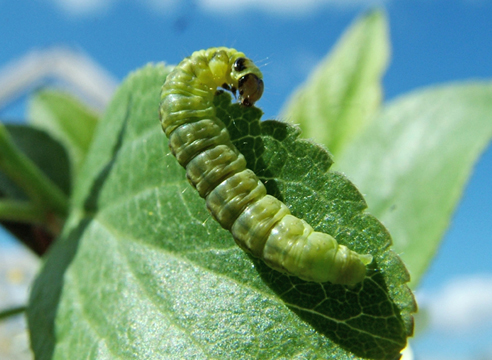
Since the curled leaves are immediately noticeable, the fight usually starts on time. Damaged leaves need to be torn off, the plant should be treated with soapy water or nettle infusion. Good results are shown by the use of the systemic insecticide "Aktara".
Rose sawflies
A small pale green caterpillar with a reddish head is called a sawfly, it can eat up all the flesh of a leaf, turning it into a drying lace of veins. They lay their eggs on the leaves. If you do not start fighting immediately after detection, the rose will weaken and stop growing.
Damaged leaves must be removed, even better destroyed, and the entire plant must be treated with Iskra or Intavir contact insecticide.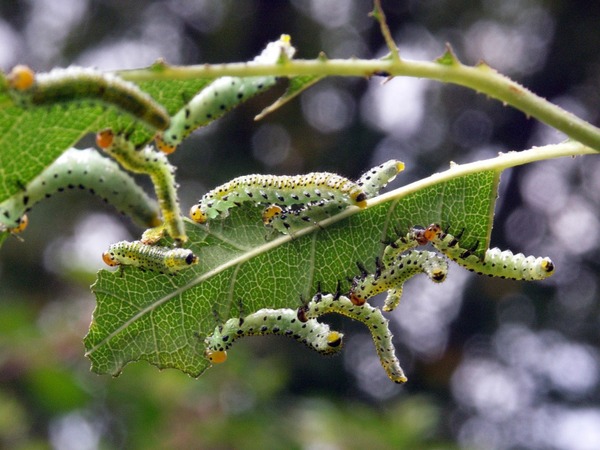
The downward sawfly can bring much more trouble, since its female lays eggs not on the surface of the stem, but inside it. This can be noticed only when the shoot suddenly begins to wither and dry up from a certain place, if the stem is broken, but the parasite is found inside. The complexity of the fight also lies in the fact that it is impossible to somehow influence the pest and its offspring - after all, he is hiding inside. Damaged shoots are simply cut to a living place. And for prevention, experts advise in the spring to treat roses with a systemic insecticide, for example, "Aktara", which is used in the fight against various pests.
Bronzovka and Olenka shaggy
These beetles love rose flowers, especially light colored ones; they eat petals, pistils and stamens. They arrive early in the morning, sit on the flowers and start having breakfast. At this time, they are collected by hand. They can appear on any day, they fly all summer. Bronze beetles are red below, and golden-green above, their females lay eggs in manure or soil rich in humus, young beetles appear in late summer or autumn, winter in the same place.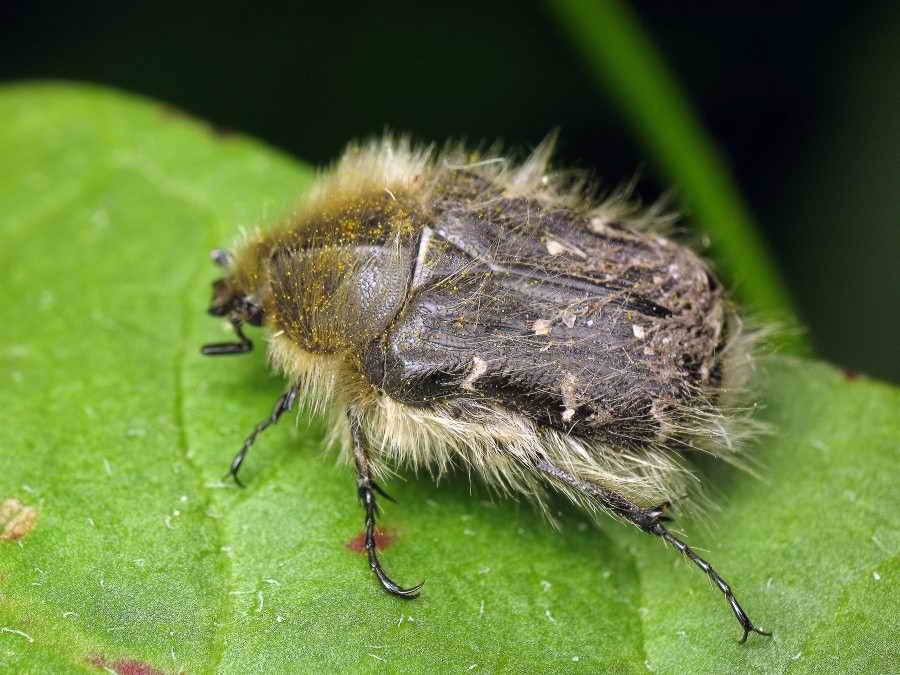
It is necessary to ensure that these connoisseurs of roses do not settle in the garden, otherwise they will attack the rose garden with even more next year. Deer behave in exactly the same way, only slightly different in appearance: black beetles covered with gray hairs and white spots do not look as impressive as elegant bronzes. It is difficult to scare them off by any means, you need to collect and carry away or destroy, dig up the earth around, do not store manure nearby.
Diseases
Rose diseases are very often caused by fungal spores, which are easily spread by wind or insects.
Plants weakened by pests especially suffer from various diseases, therefore those roses that have already had to be saved from pests should be under special supervision.
It is necessary to carefully examine all parts of the plants, start treating as soon as the disease is recognized.
Powdery mildew
Young shoots, leaves, buds are covered with a white or light gray powdery coating, deformed and dry up - this means that they have been struck by a fungus that causes a disease called powdery mildew. All affected parts of the plant must be cut off, if there are not too many of them, then the entire bush (preferably and neighboring plants) must be treated with ash infusion. Ash destroys the forming myceliums, but with a large infection it may not help. Treatment of roses with special preparations will be much more effective: "Baktofit", "Skor", "Fitosporin", "Topaz".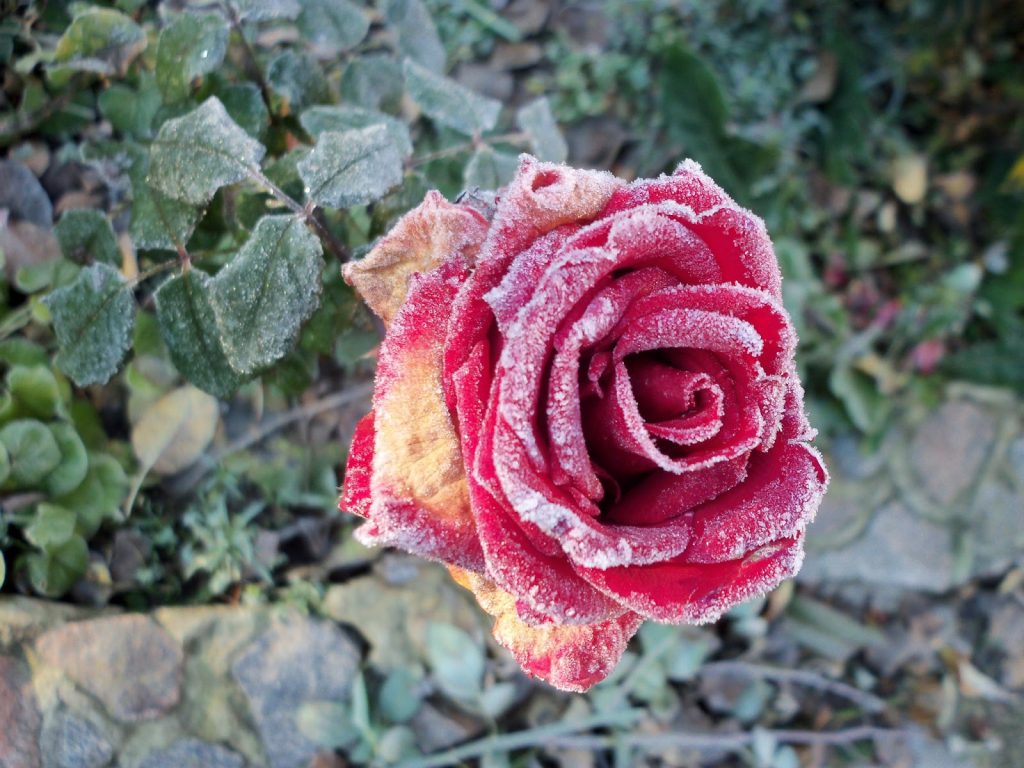
Powdery mildew develops in warm summer with high humidity, if roses grow in a ventilated place, there is no excess of fertilizers, then they are less susceptible to this disease.
Black spot
If black spots appear on the leaves in mid-July, the lower leaves quickly turn yellow and fall off, then another fungus is to blame, which damages the adult leaves of roses. If the disease is started, then sluggish young leaves may remain on the bush, the rest will simply dry out and fall off.
At the first manifestations of the disease, it is necessary to remove the damaged leaves, treat the entire bush (and the surrounding plants, not only roses) with Bordeaux liquid or special preparations: Fundazol, Profit, Topaz, Ridomil Gold.
Rust
Spores-causative agents of this disease are carried by water, in the spring in April - May, specific growths, spermogonia, suddenly appear on the leaves, they first have a yellow color, and then turn black closer to autumn. Pustules from the bottom of the leaf plate scatter spores, affecting nearby plants. The affected plant looks terrible - its leaves are covered with black and dark brown spots, they dry up, shoots are bent, cracked, spores fly out of the cracks, infecting everything around even more. This disease affects berry bushes, not just roses.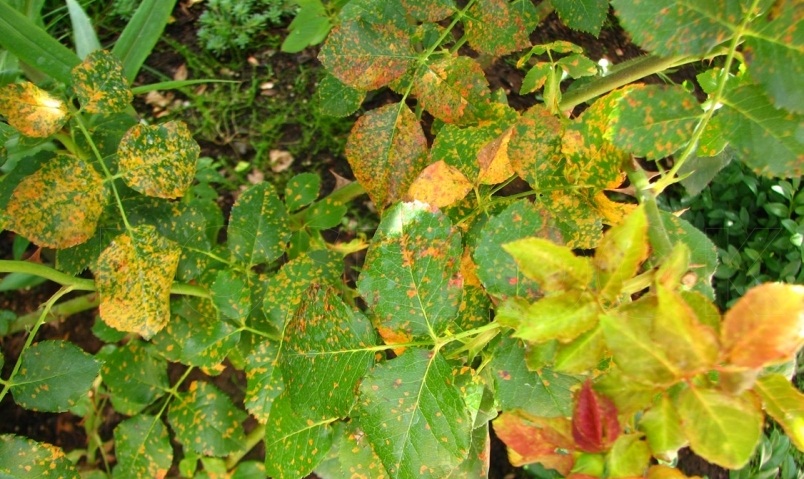
Copper sulfate, Bordeaux liquid, Topaz, Bayleton, Abiga-Peak are used for treatment. For prophylaxis, in early autumn, the bushes are sprayed with Bordeaux liquid or copper sulfate, sanitary pruning is mandatory. Some experts advise for prevention to treat plants with immunomodulators "Zircon" or "Elina-extra".
Chlorosis
Chlorosis cannot be called a disease in the full sense of the word, just the roses lack iron, and they look unhealthy - the leaves turn pale, become covered with yellowish spots, or the entire leaf becomes much paler (yellower) than the veins that remain green. Iron is a very important element for the overall health of the plant and for the balance of all other elements in its body. As a rule, there is enough iron in the soil, but it is not absorbed by roses for various reasons. For example, the soil may be too acidic or too alkaline, too dense with high moisture and insufficient drainage. Chlorosis usually begins to manifest itself at the tips of young shoots, at first it becomes noticeable on young leaves, then gradually gets to the oldest ones.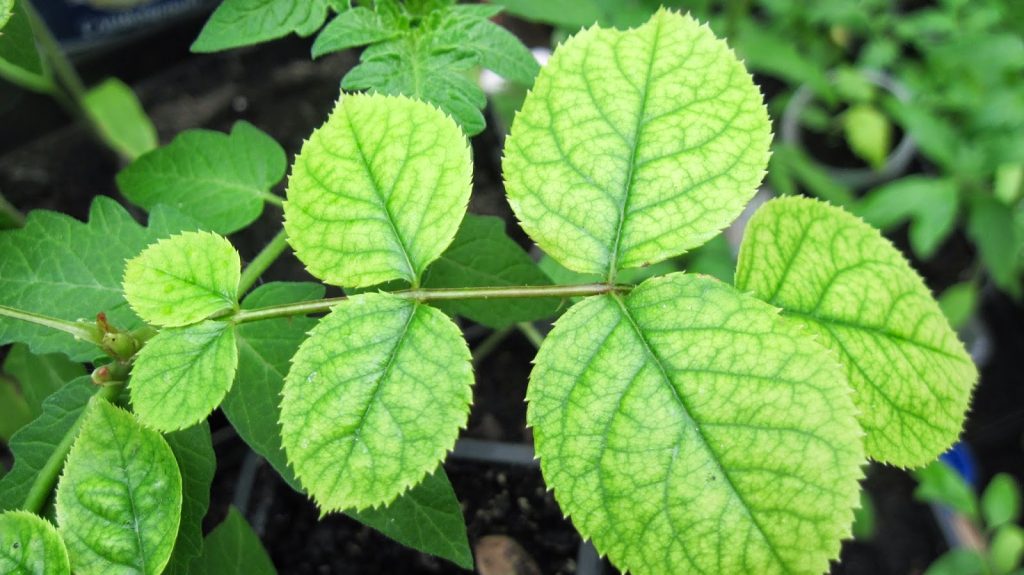
For treatment, it is not enough (or even not necessary) to add iron to the soil, you need to determine the cause and eliminate it, then the balance of useful elements will be restored. First of all, you need to find out the level of acidity of the soil. If the soil is too dense, it is worth adding peat or compost, or even sand, to make it looser and more breathable. Excess phosphorus can also block the absorption of iron, so you should be more careful when approaching complex mineral fertilizers.
Downy mildew
If dark red or purple spots appear on the leaves, the leaves curl, dry out, the shoots are deformed, cracks appear on them, then the plant is affected by the fungal disease peronosporosis or downy mildew.The thinnest white cobweb appears on the underside of the leaf, which can be seen with a magnifying glass. Probably, in early summer, the rose was affected by spores of the pathogenic fungus. Rain and wind spread spores, and favorable conditions, that is, a sharp drop in temperature, waterlogged soil, lack of ventilation, excessive shading, trigger the disease.
Diseased plants must be completely destroyed, usually they are carried away and burned. If the lesions are small, then you can treat them with the preparations "Ridomil Gold" or "Strobi". For prophylaxis during the formation of buds, plants are sprayed with Bordeaux liquid or "Kuprozan".
Preparation of spray solutions
Florists often treat rose diseases by spraying the bushes with special solutions. Copper-soap solution or lime-chlorine broth is often used, in the preparation of which there are nuances.
To prepare a copper-soap solution, use soft hot (at least +50 degrees) water, if there is no rain, then tap water can be softened by adding soda ash (5 g - per 10 l of water) or mustard (2 g ). It is best to take green soap, dissolve 300 g in 9 liters of water, but if it is not available, you can use 72 percent household soap.
Copper sulfate (30 g) is dissolved separately in 1 liter of hot water, and then it is poured into a soapy solution in a thin stream, stirring constantly with a wooden stick. A properly prepared solution has a pleasant blue color; it should be liquid without sediment and flakes. Before use, it is cooled to +20 - +25 degrees, there is no need to spray the bushes with hot water. You can store the finished solution for no more than 5 hours.
For a lime-chlorine decoction, you will need 2 liters of ground sulfur and 1 liter of quicklime (or 1.5 liters of slaked lime) and 17 liters of water. Lime must be extinguished in water so that there is no violent boiling, take a little water. When the water heats up, add sulfur and the rest of the water, everything is constantly stirring. The mixture must be boiled over very low heat for at least 50 minutes, properly prepared liquid will acquire a cherry color. During boiling, the volume of water must be replenished; for this, it is topped up no later than 15 minutes before the end of the preparation of the drug. Then the broth is defended, after cooling, it is filtered into glass or clay dishes, but not metal. If you have a hydrometer, you can check the strength of the prepared broth. Its normal density is usually within the range of 1.152 - 1.162 g - per cubic centimeter. It is a concentrate and is diluted for use. For 10 liters of water, you need to take from 180 to 220 g, a couple of days before the treatment, it is imperative to conduct a test spraying of one bush (or even part of it). If there is a burn on the plants, then lime must be added to the broth. Store the finished product in a cool dark place, the dishes should be tightly closed.
If you carefully consider the preparation of the preparations, they will definitely help the roses get rid of pests and not succumb to diseases.
Video "Diseases of rose bushes and their treatment"
From the video you will learn about the most common diseases of roses and how to treat them.

